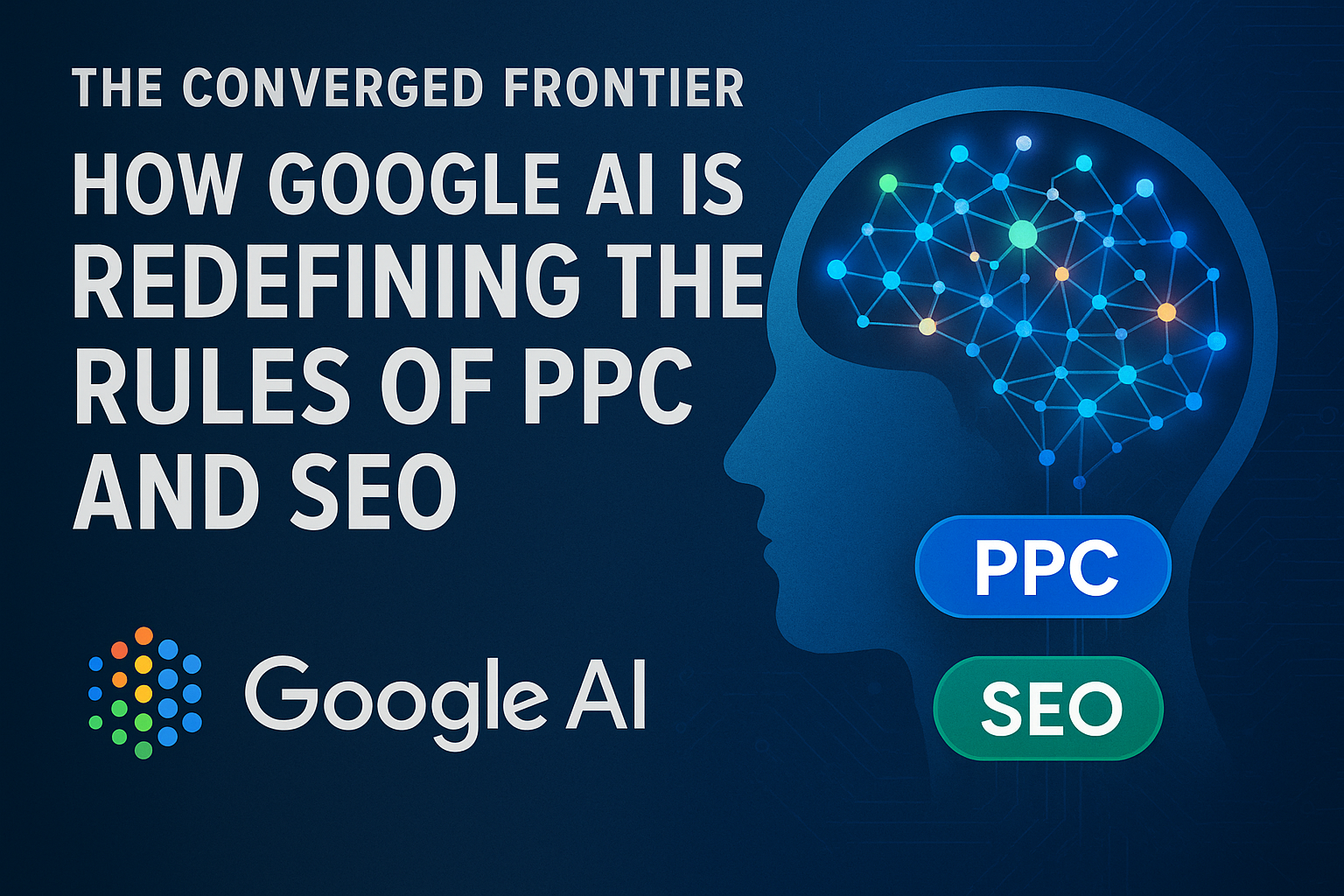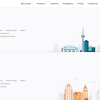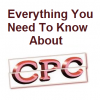The digital marketing industry stands at the edge of its most transformative era yet — one that promises opportunity for the agile and upheaval for the unprepared. This shift isn’t just about an algorithm tweak or a UI update. It’s a structural realignment of how people interact with search engines — and how brands position themselves to be found.
At the center of this transformation is Google’s integration of Artificial Intelligence across its search and advertising ecosystem. From AI Overviews to Google AI Mode, from ad placements embedded within synthesized responses to the erosion of traditional search behaviors, the boundaries between paid and organic are rapidly dissolving.
This is the converged frontier: where SEO and PPC are no longer separate disciplines, but two halves of a single, AI-influenced strategy. And navigating it successfully will require new thinking, new tools, and above all, a unified approach.
A New Search Experience: Conversational, Curated, Contextual
Google’s vision of the future search experience is built around speed, utility, and synthesis. Rather than serving users a buffet of blue links and letting them pick their path, Google now curates the meal for them through AI Overviews — multi-source summaries that appear at the very top of the results page.
Powered by Google’s generative AI model, Gemini, these Overviews aggregate data from various websites, images, videos, and shopping listings to answer queries directly. The result? A more frictionless experience for users… and a more complex one for marketers.
A landmark shift — introduced at Google Marketing Live 2025 — is the integration of paid ads directly into these AI-generated experiences. Sponsored content can now appear inside the summary text or adjacent product carousels. For instance, a search for “best electric bikes for city commuting” might yield a visual breakdown of options, with a sponsored link to a retailer embedded seamlessly within the response.
This blurs the line between editorial authority and paid visibility, redefining what it means to “rank” on Google.
The Aftershocks of AI: What Marketers Are Up Against
As AI becomes the gatekeeper between search queries and web content, both SEO specialists and paid media managers are feeling the tremors. The traditional playbooks for ranking and bidding are losing ground. Here’s how the impacts are playing out on both fronts:
The PPC Shockwave: Top of Page No More
For years, PPC has operated on a straightforward principle: pay for premium placement, and drive clicks. But when AI Overviews dominate the top of the page, that model starts to unravel.
- Click-through rates (CTR) are falling. When users receive complete answers above the fold, their need to click — even on sponsored links — diminishes.
- Cost-per-click (CPC) is climbing. With fewer visible ad slots, demand intensifies, and bids escalate.
- Conversion journeys are disrupted. The path from search ad to landing page to conversion becomes less direct. We’re entering the era of zero-click paid search, where the user’s journey may never even leave the SERP.
SEO’s New Challenge: Surviving the Zero-Click Landscape
While SEO has long contended with Google’s preference to keep users on-platform, AI Overviews have accelerated the zero-click phenomenon to new extremes. Instead of ten organic links vying for attention, brands now compete with a singular, authoritative AI-generated summary.
- Organic traffic is dropping. Studies report traffic declines between 20% and 60% in AI-dominated niches.
- Search visibility is opaque. Traditional tracking tools don’t yet account for AI Overview placements, leaving marketers flying blind.
- Content control is waning. AI summaries often paraphrase — or outright replace — original content, reducing the incentive for users to visit source pages.
This environment forces SEO professionals to rethink what it means to create content that performs — and to do so without the same assurance of traffic as before.
The New PPC Playbook: Rebuild, Rethink, Realign
To succeed in this AI-centric landscape, marketers must go beyond technical optimizations. They must rethink the very structure of their paid media strategies. That means embracing automation, shifting from keyword targeting to intent modeling, and treating AI not as a threat — but as a feedback engine.
1. Embrace Google’s AI Campaign Stack
Performance Max (PMax) and the newly launched AI Max for Search are now the keys to visibility across AI-enhanced surfaces. These campaign types automatically optimize across Search, Shopping, Display, YouTube, and more — and critically, they are designed to integrate into AI Overviews.
Success here depends on more than just turning on automation. Advertisers must structure assets thoughtfully, feed the algorithm strong creative, and continuously iterate based on performance signals.
2. Shift Focus from Keywords to Intent Signals
In a world where queries are conversational and long-tail, strict keyword targeting is no longer enough. Google’s AI thrives on broad match and Smart Bidding, using context and user behavior to determine what content to serve.
By aligning campaigns around searcher intent, advertisers unlock access to the kinds of queries most likely to trigger AI Overviews — and therefore, to drive high-value exposure.
3. Build a Real-Time Feedback Loop
AI campaigns generate rich search term data — but too few marketers use this to its full advantage. The smartest teams analyze this data weekly (or even daily), mining it for:
- Emerging query themes
- Shifts in user language
- Unexpected performance patterns
This insight fuels a continuous feedback loop — informing new ad copy, landing pages, and even top-of-funnel content. What was once a black box becomes a lens into real-time user behavior.
4. Rethink Ad Creative for AI Curation
If AI is selecting which ads to surface in its summaries, then your content must speak as much to the algorithm as to the audience. This means:
- Structuring copy to answer questions directly
- Avoiding fluff in favor of clarity and authority
- Embedding trust signals, such as reviews, stats, or expert quotes
Think of your landing page as both a conversion tool and a source document for AI synthesis.
5. Compete for Context, Not Just Placement
AI won’t display ads that feel out of place. Your content must fit the logic of the Overview, offering a seamless next step in the user journey. That means obsessing over ad relevance, matching your message and offer to the specific need implied by the query.
6. Maximize Share of SERP Through Strategic Saturation
To maintain brand presence, think holistically. For a single query, your brand should ideally appear:
- In the AI Overview
- In the standard Search ads
- In the Shopping carousel
Achieving this requires tight coordination across campaign types, and a budget strategy that prioritizes multiple touchpoints — not just the “top slot.”
7. Reallocate Budget Dynamically
Rigid budget silos (e.g. Search vs. Display) no longer serve marketers in a fluid AI environment. Budgets must move dynamically between campaign types — and even between platforms. When traditional Search impressions drop, that spend should shift toward high-performing surfaces like YouTube, Discover, or Shopping.
Diversification is key. Marketers should also double down on first-party channels like email and owned content platforms to mitigate traffic volatility.
What’s Next? Unified Search Strategy, Unified Teams
The AI wave isn’t a one-time disruption. It’s the beginning of a permanent evolution. And right now, Google’s metrics tools — including Ads and Search Console — don’t yet provide full transparency into AI Overview performance.
But waiting isn’t a strategy.
The most forward-thinking marketing teams are already retooling. They’re merging SEO and PPC workflows, uniting content and media strategies, and building full-funnel visibility from impression to conversion.
Success in this new era will come not from isolated expertise, but from cross-disciplinary fluency. The marketers who thrive will be those who can blend creativity and analytics, organic authority and paid scale — all while letting AI augment, not replace, their instincts.
This is not the death of search marketing. It’s its rebirth — smarter, faster, and more integrated than ever.



